Guge Kingdom
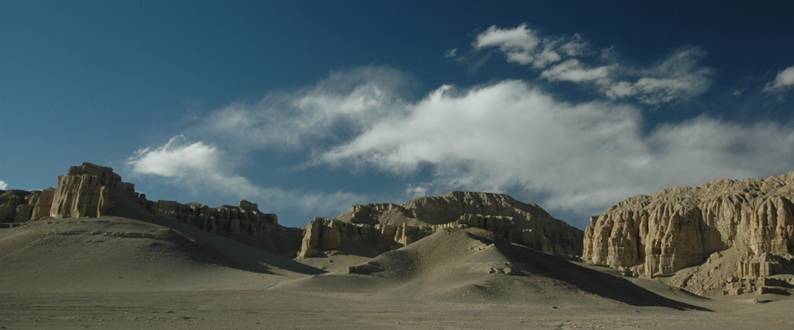
The Guge Kingdom is home to what was one of the most prosperous kingdoms in Tibet. Its inaccessibility makes it little known although the sights rival any of Tibet’s tourist hot spots. For us the two day side trip to the kingdom felt like a proper adventure. It started with a heavily rutted, iced and occasionally washed out track that wove its way across a 5000m pass and down into the valley beyond: A white knuckle ride that was further rewarded by astonishing views of the rolling hills behind and the start of the white-topped Himalayas in front. Once across the pass, festooned with prayer flags, the track joined another and descended into the Guge Kingdom.
The kingdom is based on and below a vast alluvial plane that has been eroded to form enormous and complex gorges, cliffs and pillars of stratified mud and rocky river sediment. After the high planes and mountains of Xinjiang and the Tibetan plateau the contrast is breathtaking as well as slightly eerie.
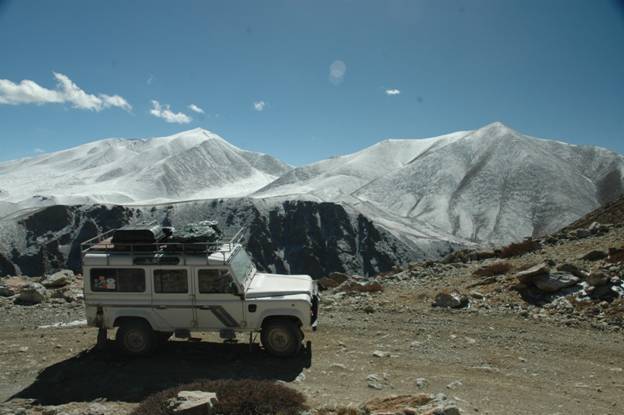
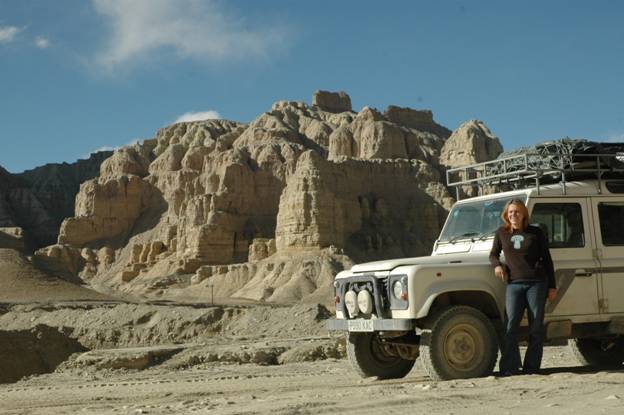
After many km of driving down a side valley, folded gorge walls towering above us, we emerged into the largest river valley where the main settlements are situated. Other than the other-worldly scenery the highlight of the trip is the summer palace of the Guge king.
The palace is built on the crest of a huge spur of rock and mud: A fearsome defensive position as well as offering inspiring views of the kingdom stretching to the mountains on the horizon. Although the edifice has stood many centuries, its construction on a foundation of mud always seems a little precarious to the rain-soaked British experience. Below the palace are built tiers of settlements arranged with the people below, the monks in the middle before the palace is reached through a narrow tunnel that can be caved in as a last line of defence.
On the people’s level are several temples built at different stages to the 17th century. The most grand of which, the white temple or Lhakhang Garpo, contains images of 18 Buddha, Lamas and other leaders as well as two giant, fearsome papier mache statues that guard over the entrance. Much of the wood for the temples was carried from India, a border not far from the kingdom and an influence that can be seen in much of the ornate imagery.
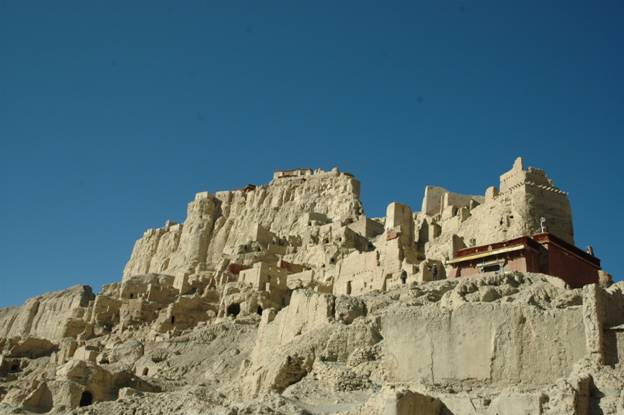
Our first sight of ancient Tibet, this was also our first glimpse of the destruction that the Red Army had caused to the historical artifacts of the region. Statues had been smashed, homes and temples destroyed, while painted imagery was masked by black soot from the fires of the soldiers that used the temples as barracks. An image inside the door of one temple showed the outcrop as it was in the 17th century: an astonishing crowded canvass of homes unrecognizable from the partial ruin it is now.
Our drive back took us over another 5000m+ pass on a “road under construction”. Apart from a dreadful chore we also had mixed feelings about the exposure that a new road would bring to the region, making short-lived the uniqueness of the experience we had been able to enjoy.
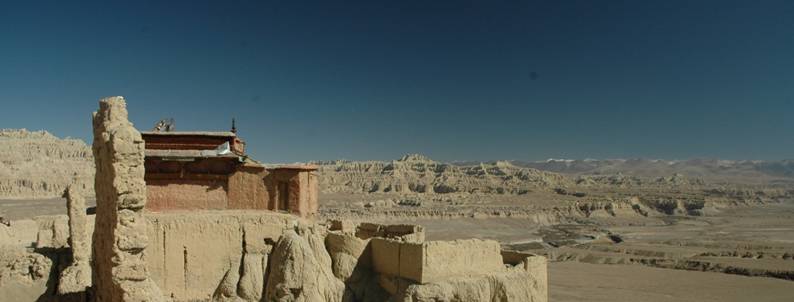
Last Updated (Friday, 04 December 2009 05:58)
